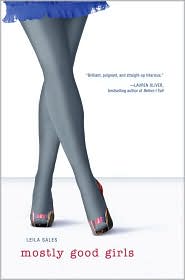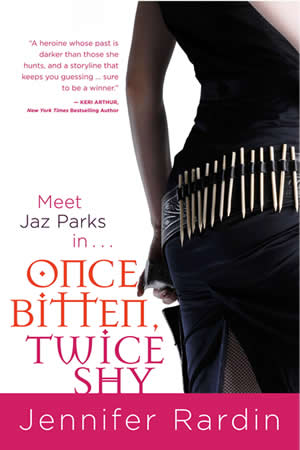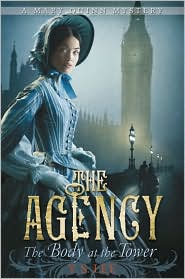Tags: YA, obesity, self-esteem, body image, football
Rating: 4 out of 5
Summary
High school sophomore Andrew Zansky is 307 pounds of fat, and as a result he doesn’t fit in anywhere. He’s awkward around his perfection-seeking family and ignored in school by his more beautiful classmates. When Andrew falls for the beautiful new girl, April, he decides, much to his geeky best friend’s chagrin, to join the football team—partially to impress her and partially because he wants so badly to fit in somewhere.
To his surprise, Andrew is halfway decent at football, and as he begins to grow close with his teammates, he finds that his “stock” has risen. However, Andrew doesn’t really want to play football, however, and he begins to uncover things about his teammates and April that unsettle him and make him question all his actions. What will he do to make sure he stays true to himself?
Review
It’s been so long since I’ve been impressed by and enjoyed a book about an obese kid’s attempt to fit in at his/her high school, but
FOOD, GIRLS, AND OTHER THINGS I CAN’T HAVE had me grinning, cringing, and unable to put it down. Allen Zadoff writes convincingly of Andrew’s misadventures and eventual self-discovery.
As the protagonist, Andrew is charming without trying too hard, a perfectly proportioned teenager (emotionally, if not physically). Likewise, every other teenager in this book has his or her ups and downs, good sides and bad sides. O., the quarterback who befriends Andrew, is smooth at the top of the social pyramid and yet has real worries and doubts; April, Andrew’s love interest, has legitimate reasons for acting two-faced. Zadoff achieves what many other writers cannot: an effortless three-dimensional characterization that defies black-and-white and stays true to the complexities of adolescent nature.
FOOD, GIRLS, AND OTHER THINGS I CAN’T HAVE brings together the best of YA realistic fiction—empathetic protagonist, complex characters, and a relatable conflict—to be a lingering read. This is a book that cannot get too much attention, as it will be worth all the talk and badgering to just read this book already.
Similar Authors
Carolyn Mackler (
The Earth, My Butt, and Other Big Round Things)
Maureen Johnson
John Green (
An Abundance of Katherines)
Don Calame (
Swim the Fly)
Writing: 4/5
Characters: 4/5
Plot: 4/5
Overall Rating: 4 out of 5
Cover discussion: 3 out of 5 - I like it! It's an original way of displaying the title, hinting at what the book is going to be about while not automatically alienating anyone from picking it up.
Thank you, Stephanie at EgmontUSA, for sending me an ARC for review!
Interview with Allen Zadoff
I have had the pleasure of asking the awesome Allen Zadoff a few questions. Besides for being refreshingly honest, Allen is also hilarious, and his answers and opinions on difficult subjects such as body image and obesity are worth hearing about. Read on, beloved blog readers!
1. Besides for having the same initials as you (which may or may not have been intentional), how else is your protagonist, Andrew Zansky, similar to the teenage you?
The same initials? I had no idea! :-) But honestly, Andrew Zansky and Allen Zadoff have a lot of things in common, the largest being our bodies. I was fat in high school, not quite as big as Andy, but big enough. I couldn’t fit into the desks at school, I hated being teased, and I had a mortal fear of all things related to gym class. There’s a certain mindset when you’re big in the world. A normal-sized person does not sit down, hear the chair creak, and fear they might end up sprawled on the floor in an embarrassing heap. But a large person walks into a restaurant and looks first at the chairs. Are they big enough? If there are booths, will there be enough room for my stomach to clear the space between the booth and the table? I wanted the hero of
FOOD, GIRLS to share this world view, and I wanted to use his weight as a jumping off point for a discussion of what it feels like to be different in the world, not just for big kids but for everyone.
2. Food, Girls is one of very few books I've read that feature Asian American characters whose race is not a significantly troublesome part of their identity. What is your experience with and interest in Asian culture, and how did that translate into your writing?
Maybe it’s not a significant problem in the novel, but it’s a problem nonetheless. One of the themes of
Food, Girls is that we often struggle to change who we are, when who we are is just fine. It’s all in your perspective. The romantic lead in the story, April Park, is a Korean girl who wears blue contacts and gets her teeth whitened by her dentist father. April doesn’t talk much about her struggles with identity, but I tried to show it in subtle ways. She’s under enormous pressure to succeed from her father, and she’s clearly unhappy with her appearance. (By the way I know a lot of Korean girls in L.A. who have had eye surgery. I just don’t understand it.) I think April’s really struggling, trying to fit in socially, and also trying to find her place in the caucasian world. On the other hand, she has pride in her culture. At one point Andrew mentions Sumo wrestling, and she pointedly says to him, “I’m Korean. Sumo is Japanese. We’re not all the same, you know.”

This is my experience of Asian culture from a caucasian perspective. Many white people see “Asian” as being one big culture. It’s usually not because they’re racist; they just don’t know. It’s a lack of exposure in my opinion. I lived in Japan for a time, I visited southeast Asia, and I live and work in Los Angeles where we have a massive Korean community, the largest outside of Seoul. I’ve had a number of Asian friends over the years, mostly Chinese, Korean, and Japanese. So I know how distinctive the cultures are, and how ridiculous it is to see them as only one thing. But I had Andy in
FOOD, GIRLS makes that exact mistake.
If I could go back and write the novel again, I’d give this area a little more attention because I think I didn’t do quite enough with it.
3. Tell us a bit about your writing coach job. What is the best part of that job? What are some interesting and crazy things that have happened to you on that job?
I love coaching other writers because it gives me the opportunity to share with them what I didn’t know when I was a young writer. I was so focused on success and writing well, and it messed me up for a long time. When I got to Hollywood, it only got worse. There’s a lot of pressure to succeed in that world. It took a lot of years, but what I eventually learned about writing is that it’s not about being a genius or being famous, but about doing the work to tell the story in your heart. So many people have a desire to tell a story, and they’re worried about whether they’re “good” or not. I think it’s better to stop worrying about being good and start asking questions about your story. What does my hero want? What is he/she willing to do to get it? How far is he/she willing to go? What does he/she learn at the end of the story? When I keep my focus on the story, I’m in the process rather than the results.
4. What do you wish you knew about over-eating and body image when you were a teenager?
I wish I knew how to stop overeating and love myself! But I’ve found that’s a lifetime journey for me. I wish I knew that you don’t have to be a certain size to be okay. This might be obvious to some people, but it wasn’t to me. I thought the world was divided into fat and thin, and love only went in one direction, towards the thin people. Today I understand that one size does not fit all. With that said, my overeating was more than just a little problem; it turned into a full blown eating disorder, and most eating disorders get worse over time. That’s what happened to me. In high school, I didn’t even know that men could have eating disorders. I just thought I was fat. I wasted a lot of years trying to control my eating because I didn’t know I needed help to get better.
5. As your website says, you've done a significant bit of traveling in your lifetime. Where was your favorite place to live, and why?
I love big cities with lots of street culture—walking cities like London, New York, and Tokyo. I think it’s because I grew up in the suburbs, and I was a really lonely kid. I couldn’t wait to get where the action was. It’s ironic that I love those cities given that I live in Los Angeles, the center of car culture. We never walk in L.A. If an Angeleno has to go across the street, they get in their car and drive the 50 feet. It’s hysterical.
6. So far, you've written an adult memoir and YA realistic fiction. Are there any other genres you'd like to try writing in, or other particular issues/topics you'd like to write about in the future?
There are so many things I’d like to write about, and if I’m lucky, I’ll get to do them all. As a reader, I’m a secret fan of thrillers, mysteries, and even horror. So I’d love to try my hand at genre writing as well. But I have a particular love for realism, getting deeply inside the psychology of a character. I’m currently writing another novel for EgmontUSA. It’s not a sequel, and it doesn’t deal with weight issues. But it is contemporary and realistic along the lines of
Food, Girls. It’s set in the world of high school theater, a place where I spent a lot of time.
7. What good books would you recommend to teens struggling with their weight and body image?
Is it terrible of me to recommend my own book? I wrote a memoir two years ago called
Hungry: Lessons Learned on the Journey from Fat to Thin. I think it’s a really fun and gentle introduction to a very serious problem, and teens might relate. I also recommend Geneen Roth’s book,
When Food Is Love. It’s one of the first books that woke me up to the kind of eating I was doing. Beyond that I’d say talk to your doctor, find a good therapist or counselor who deals with eating disorders. Don’t try to do it alone. And know that there is a huge recovery community out there, people of all ages who have struggled with overeating, bulimia, anorexia, and over-exercising. There really is a lot of hope, but when you’re trapped in the food or body obsession, it seems like there’s none at all. This to me is one of the most painful aspects of food disorders—they seem to manufacture hopelessness and self-obsession, and in my experience it’s almost impossible to break that cycle on your own.
-
Thank you Allen, for your insightful answers! I hope you consider checking out Allen's YA debut,
Food, Girls, and Other Things I Can't Have, whether it's for yourself, a friend, or that kid who you think would really benefit from reading a funny book about a serious problem. It really is a fantastic read!
This post brought to you by Traveling to Teens!






















 1. What are some of your favorite stories (from any genre) involving the Devil/Satan?
1. What are some of your favorite stories (from any genre) involving the Devil/Satan?






